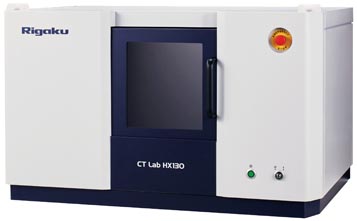BREADING AIR AND OIL DISTRIBUTION ANALYSIS
About the sample: Breading
A breading is defined as “a dry mixture of flour, starch, and seasonings, coarse in nature, and applied to moistened or battered food products prior to cooking. (Suderman, (1983), Batters and Breadings in Food Processing, 2nd edition published by Elsevier Inc. in 2011). In many cases, cooking is done by deep-frying, and the breading contains air bubbles after the cooking process. How much air is in the breading, how large the air bubbles are, and how much frying oil remains in the breading can affect the taste and texture. X-ray CT (computed tomography) can be used to visualize the air and oil distribution in the breading.
Analysis procedure
1. CT scan
A corndog was scanned to produce the 3D grayscale CT image. The CT cross-section is shown on the right. The gray levels represent the density of materials. Air appears black. While the breading and sausage appear dark and light grays, respectively.
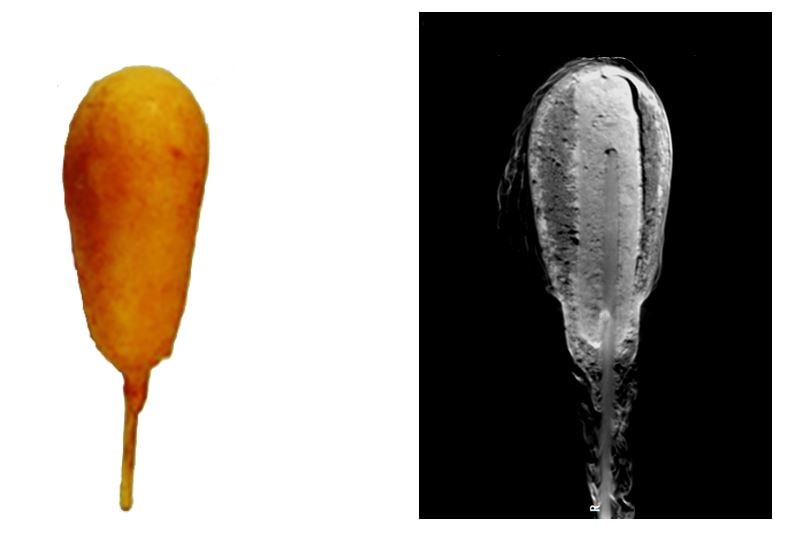
2. Segmentation
The resulting image was segmented into fat (beige), protein (red), and air (dark brown) using the machine learning technique. (When there are more than three phases to segment, the machine learning or deep learning method works better than the thresholding method. These two techniques can compensate for the partial volume effect.)
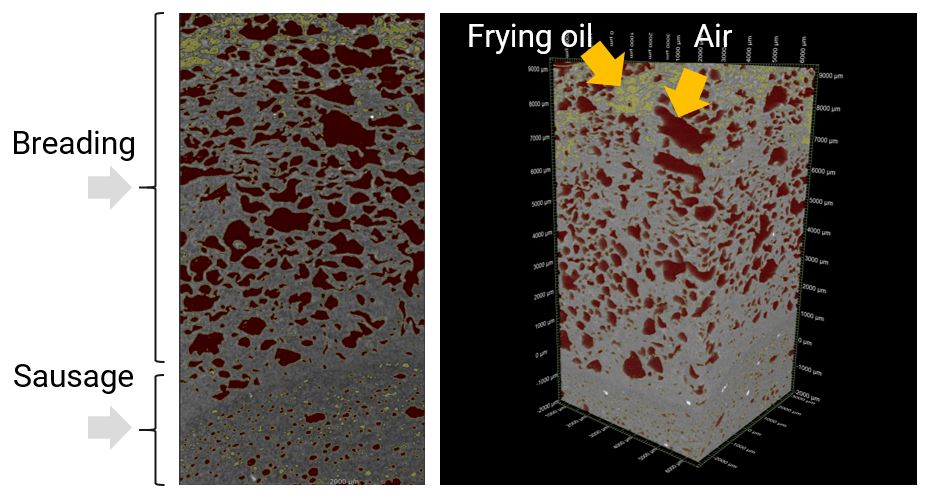
More Food Application Examples
Watch an on-demand webinar about X-ray CT food applications.
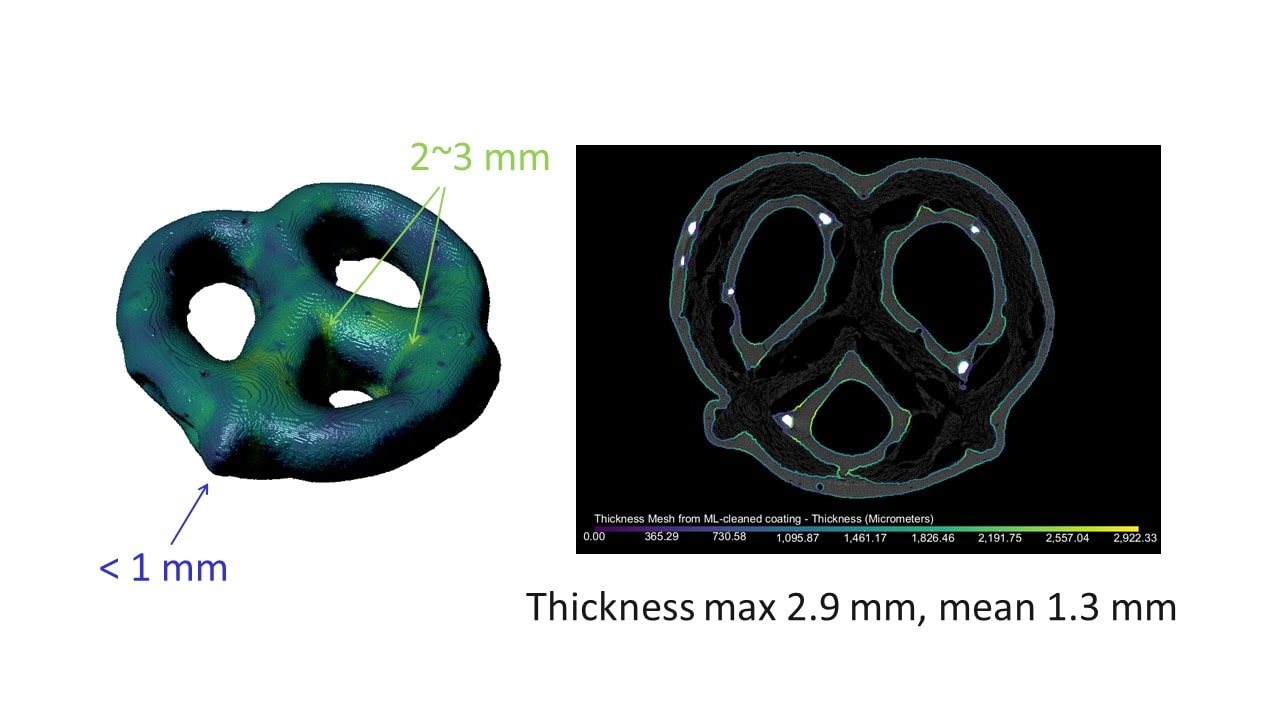
Pretzel coating analysis
Application Note
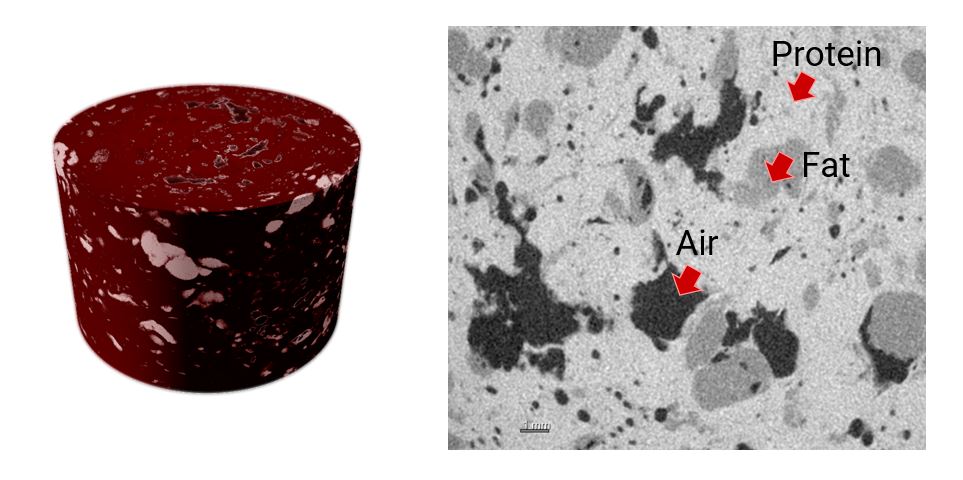
Processed meat fat and protein analysis
Application Note
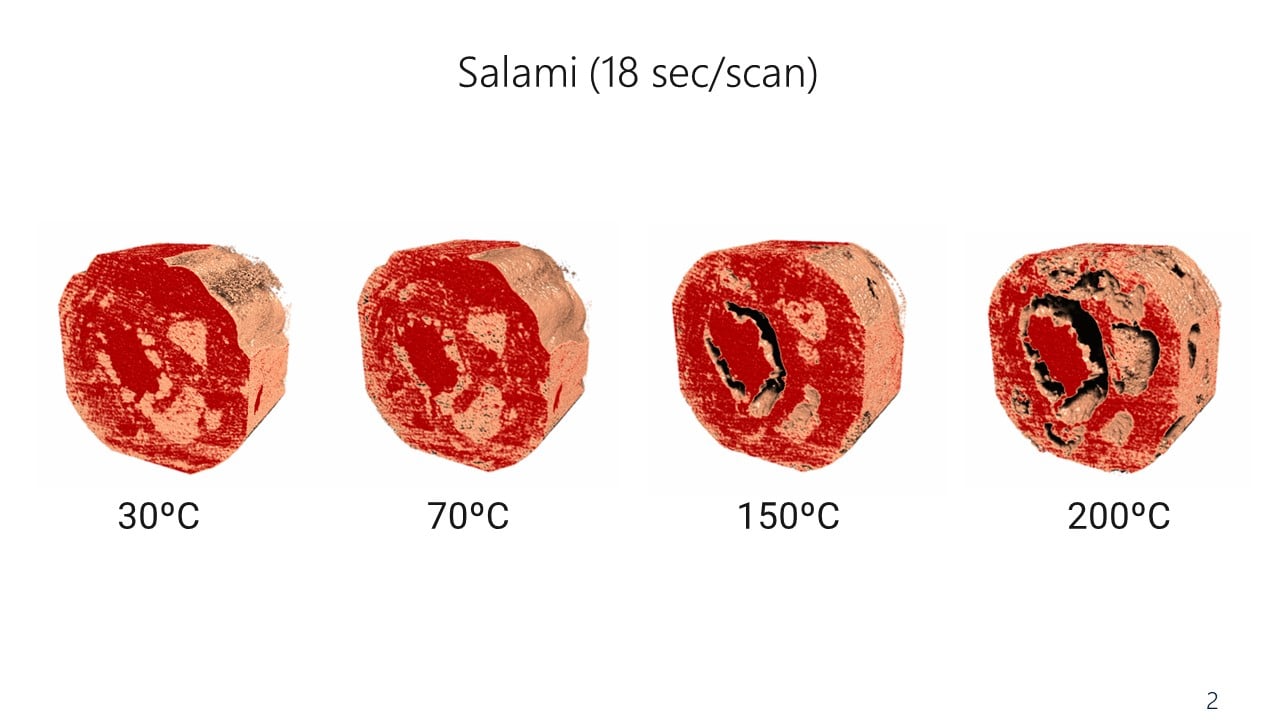
Processed meat heating experiment
Application Note
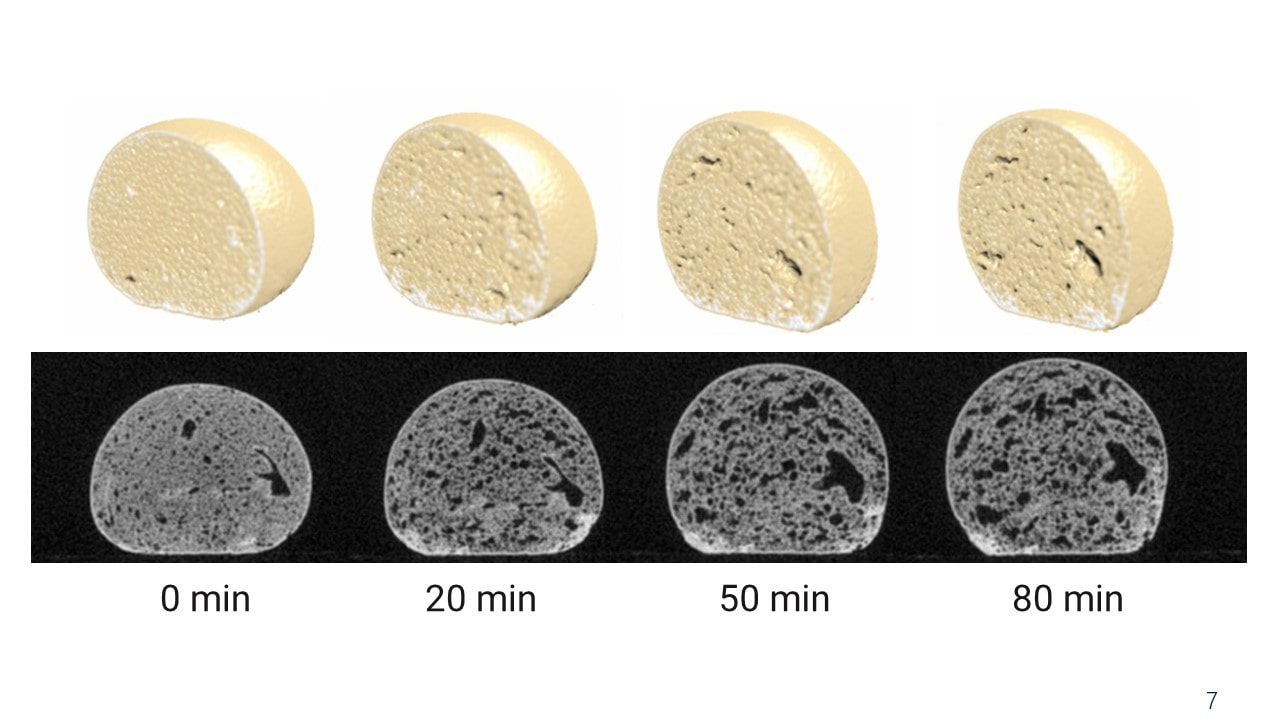
Bread dough rising process
Application Note
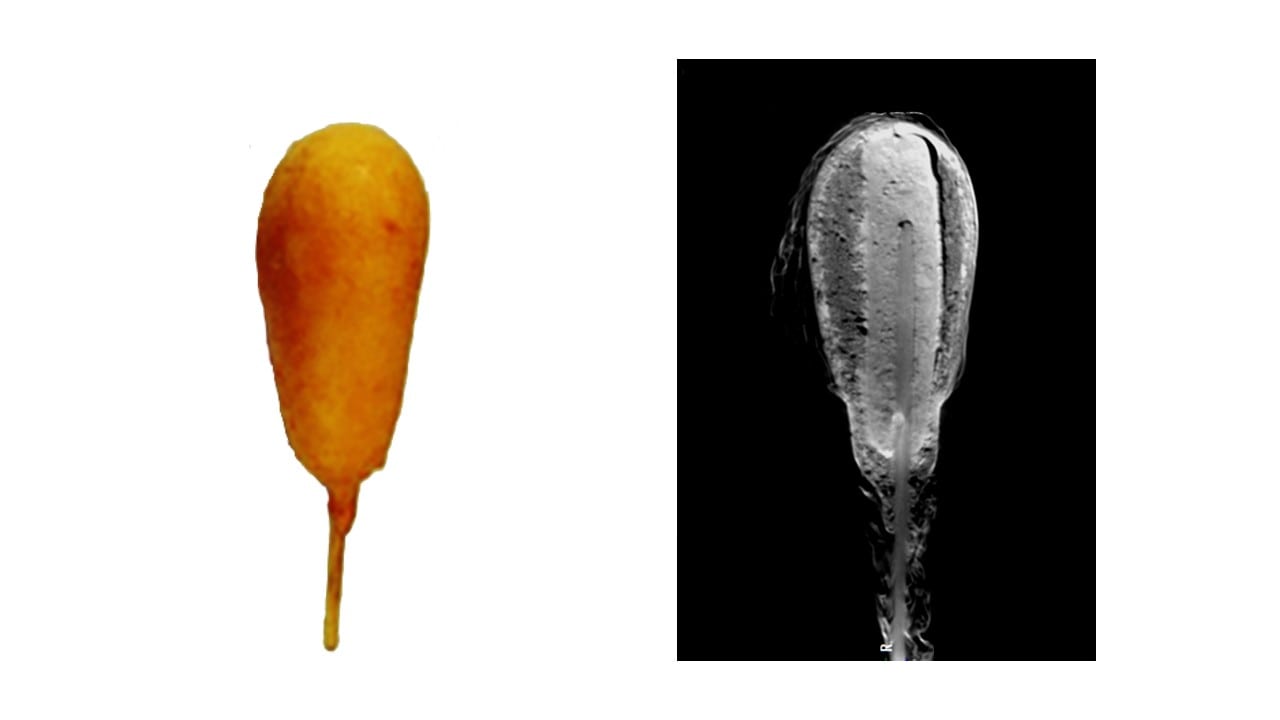
Breading air oil distribution analysis
Application Note
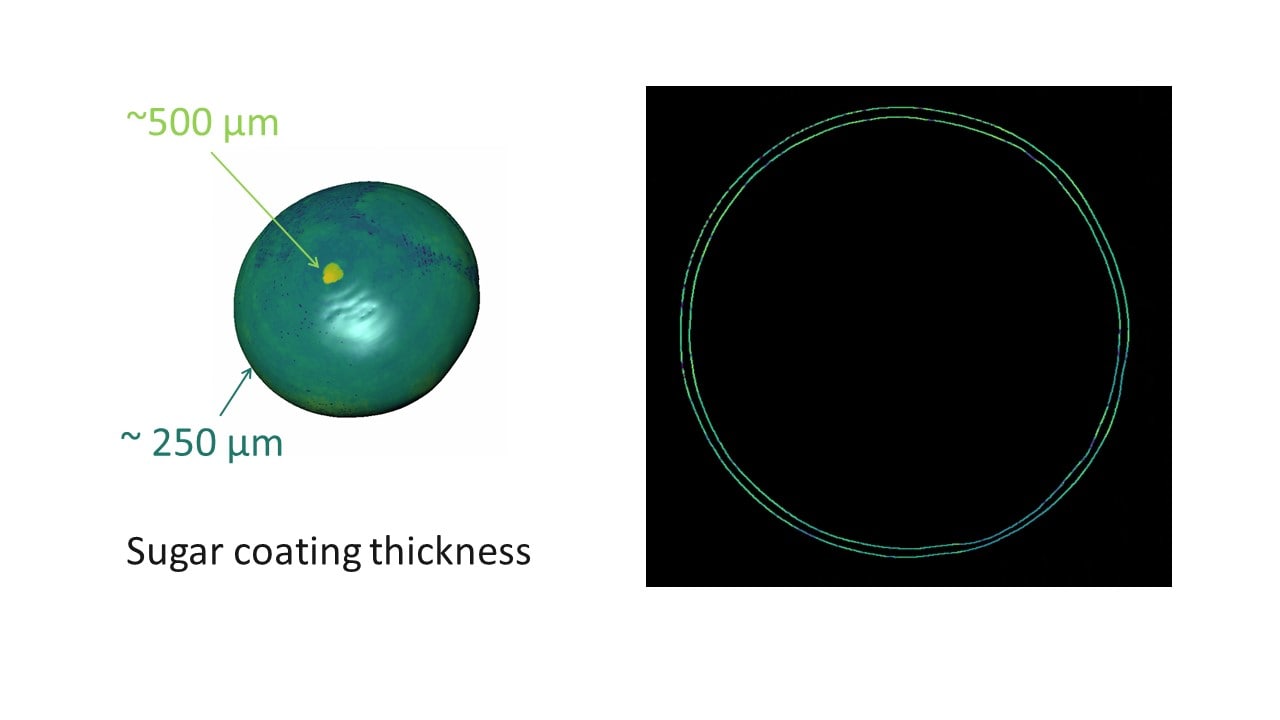
Chocolate candy sugar coating analysis
Application Note
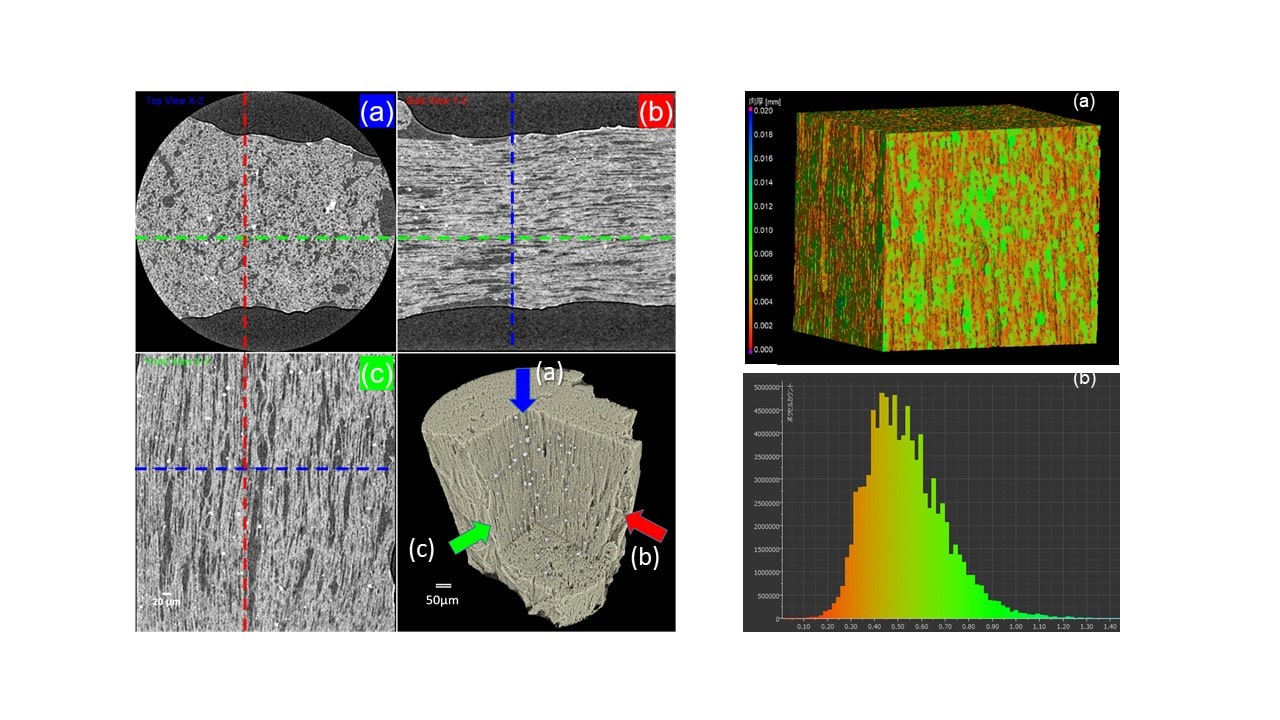
String cheese texture analysis
Application Note


